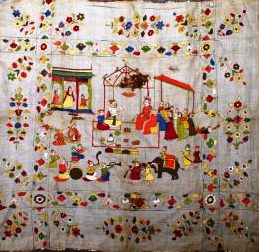
Editorial
Observations on Craft: Artisanal production - The Third Millennium
Sunny and Meeta
October, 2017
Artisanal Production -The Third MillenniumWith huge hurricanes of globalised capitalism hitting most of the worlds geographical regions its time we looked at artisanal production from the viewpoint of future relevance, mechanisation, markets, employment. To look at artisanal activity as a major social and economic force in developing countries and look at it with the widest structural vision to be able to do a comprehensive analysis of its strengths and weaknesses. To be able to emerge from classic debates of revival versus innovation , functionality versus aesthetic and cultural production, niche versus mass markets. I have always felt the beginning should be made by studying how artisanal communities have adapted to modern industrial practices, how they have reinvented or reskilled themselves. The intervention by state, cultural elites and civil society are peripheral at best, working mostly with the beautiful and the decorative rather than the mass of artisans. India has millions of weavers, potters, carpenters, masons, wood and stone carvers, metalworkers. Who has studied the transition of Ramgharia lohars, a sikh community who made a smooth transition in the city of Ludhiana where all the biggies of cycle industry like Atlas and Hero began, and now Hero Honda is the largest producer of motorbikes in the world. The Ramgharia lohars created copies of highly expensive western machinery and innovated small machines appropriate to our capital scarce economies. They are not engineers trained in ... |
This is a preview. To access all the essays on the Global InCH Journal a modest subscription cost is being levied to cover costs of hosting, editing, peer reviewing etc. To subscribe, Click Here.



